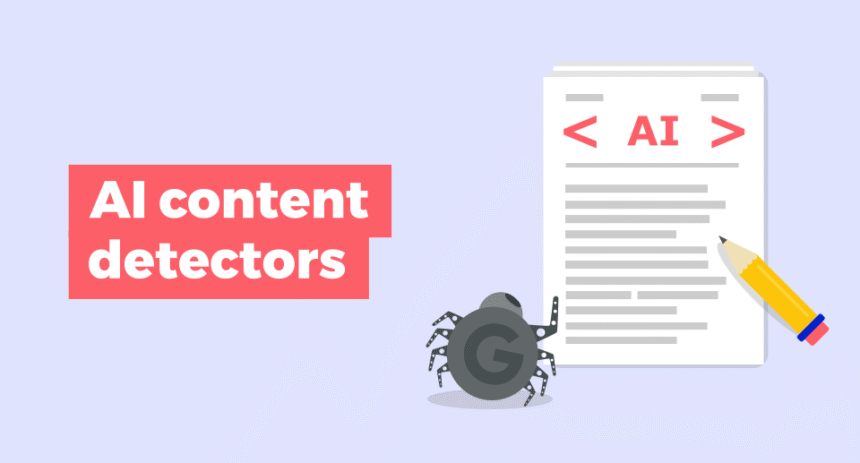AI detection tools examine writing in ways that go beyond word choice or grammar. They study how sentences flow, how ideas connect, and how predictable the language feels. These systems look for subtle patterns—like repetition, uniform sentence length, and low variation—that often reveal machine-generated text.
By comparing linguistic fingerprints from human and AI writing, detectors estimate how likely a passage comes from a model such as GPT or Claude. They rely on measures like perplexity and burstiness to see whether the writing feels naturally varied or statistically uniform. The outcome isn’t proof of authorship but a probability based on data-driven signals.
Understanding what these systems look for helps writers, educators, and analysts interpret results responsibly. Exploring the methods behind AI detection and the real-world challenges these tools face can reveal how technology distinguishes between authentic expression and algorithmic precision.
Core Methods Used by AI Detection Tools
AI detection systems identify patterns, probabilities, and stylistic markers that signal whether text was written by a person or generated by a machine. They rely on measurable features in language, statistical analysis, and learned models that track the kinds of word choices and structures more common in human writing.
Statistical and Linguistic Pattern Analysis
Detecting AI-generated writing begins with understanding how humans and machines use language differently. Tools compare sentence structures, vocabulary variety, and rhythm to assess if a text follows natural writing tendencies. Human authors typically produce more variation in tone and syntax, while machine-written content often repeats certain structures and phrasing.
Common features analyzed include part-of-speech frequency, n-gram distribution, and semantic coherence. When a text shows uniform cadence or mechanical transitions, it tends to match AI writing profiles.
For example:
| Feature | Human Writing | AI Writing |
| Sentence variety | High | Moderate to low |
| Word predictability | Inconsistent | High |
| Tone shifts | Natural | Minimal |
Refinement tools such as Humanize AI aim to adjust these patterns so the output mimics authentic human flow.
Perplexity and Burstiness Metrics
Two quantitative markers—perplexity and burstiness—form the backbone of many AI detector algorithms. Perplexity measures how predictable each word is in context. A low score suggests the model producing the text found the next word very easy to anticipate, a trait common in machine writing. Human-created text usually contains more surprises and irregularity, resulting in higher perplexity.
Burstiness tracks sentence variation, examining length and complexity. Human authors create uneven rhythms, long descriptive sentences beside short emphatic ones. AI models, predicting word-by-word, tend to form balanced, medium-length sentences. Low burstiness often signals automated generation. Detectors weigh both scores together: low perplexity and low burstiness raise the likelihood that the text is AI-produced.
Machine Learning Models and Training Data
Behind detection tools are machine learning models trained to distinguish human and AI text across large datasets. Developers feed labeled examples into classifiers such as logistic regression, support vector machines, or fine-tuned transformer models. These systems learn which linguistic signatures align most with human or machine authorship.
Training data quality determines accuracy. Models must include writing samples from multiple genres and authors to avoid bias. Some systems also analyze metadata, such as editing patterns or timestamp irregularities, to spot automation. Because AI writing continues to evolve, detectors require frequent retraining to keep pace with new language generation models.
Combining Human Judgment with Automated Detection
Automation alone does not guarantee correct classification. Human judgment helps interpret results and identify cases where detectors misfire—such as creative writing, edited AI text, or multilingual content. Experts review flagged passages and evaluate tone, logic, and factual coherence. Machines quantify; humans contextualize.
Many educators and editors now use hybrid workflows that mix algorithmic evaluation with expert review. This approach reduces false positives and improves fairness when evaluating student work or online submissions. When refinement is needed, users often adjust text manually or use rewriting tools to humanize AI text, creating content that reads with the nuance, rhythm, and spontaneity typical of authentic writing.
Leading Detection Tools and Real-World Challenges
Modern AI detection systems aim to maintain integrity and transparency in digital communication. They rely on different analytical methods—such as perplexity scoring, burstiness analysis, and linguistic modeling—to flag AI-generated text. Each platform takes a distinct approach to improving content authenticity while managing the trade-offs between accuracy and fairness.
Originality.ai: Academic and Content Authenticity
Originality.ai operates with a strong focus on academic integrity and professional content validation. It scans documents for linguistic consistency and statistical patterns that indicate AI-written content, using models trained on large datasets of human and machine-generated text. Its analysis often pairs AI detection with plagiarism checking, giving educators and publishers a more complete measure of originality.
Users rely on Originality.ai to verify essays, blogs, and research drafts across various industries. The platform provides percentage-based likelihood scores that help assess whether text may originate from AI. While its precision has improved, the system can sometimes overestimate AI presence in polished human writing, especially in formal academic contexts. To address this, educators often combine tool results with manual review of writing style and context.
Key features include:
| Function | Description |
| Detection Method | Probability and pattern-based text evaluation |
| Core Users | Academic institutions, content publishers |
| Added Capability | Plagiarism detection integration |
GPTZero: Pioneering Detection for Modern Language Models
GPTZero gained early attention for identifying writing created by large language models such as ChatGPT. It emphasizes burstiness (variability in sentence structure) and perplexity (how predictable text sequences are) to evaluate AI-generated content. Lower burstiness and perplexity often indicate that a machine, rather than a person, produced the text.
Developed initially for educational use, GPTZero identifies potential cases of student misuse of generative AI. Its interface highlights suspect passages and provides confidence scores. Although it performs well on longer texts, short or heavily edited samples can reduce its reliability. As newer AI models mimic human rhythm more closely, GPTZero continues to adapt its algorithms and extend detection across different writing domains, from journalism to technical documentation.
Copyleaks and Multi-Tool Approaches
Copyleaks integrates AI detection with plagiarism scanning, which appeals to organizations managing large-scale content verification. It analyzes context, coherence, and semantic variety to distinguish between AI-written content and authentic human text. The system’s multi-model framework enables frequent updates that reflect evolving writing behaviors.
Many institutions combine Copyleaks with other detection tools to reduce dependency on a single model. A multi-tool approach improves confidence when evaluating mixed or edited text. This strategy mitigates the weaknesses of any one detector and helps verify content authenticity across languages and formats. Despite its strengths, Copyleaks can still return false positives, particularly when human writers use structured or formulaic language common in professional or technical fields.
Current Limitations: False Positives and Evolving AI
Even sophisticated AI detection systems face persistent issues with false positives and false negatives. As generative models evolve, their outputs increasingly mirror real-world writing patterns, narrowing the margin of distinction. This makes strict reliance on automated scoring risky, particularly in academic or journalistic environments where misinformation and credibility are critical concerns.
Human oversight remains essential. Writers and reviewers must interpret detection results in context, considering the purpose and style of the work. False accusations can damage reputations, while undetected machine text can erode trust in published material. Future detection tools aim to refine datasets, reduce bias, and better accommodate hybrid content, where human and AI contributions naturally coexist.
Conclusion
AI detection tools rely on measurable patterns rather than intuition. They examine predictability, sentence variation, and vocabulary diversity to spot text that lacks the spontaneity typical of human writing. These systems compare linguistic signals against statistical norms to assess whether a passage is machine-generated.
Although modern detectors use advanced natural language processing (NLP) and machine learning models, accuracy remains limited by evolving AI capabilities. Detecting subtle differences in rhythm and word choice requires ongoing updates and calibration across varied datasets.
Transparency and human review continue to play essential roles. Detection results often indicate probability, not certainty, making balanced interpretation crucial in academic, professional, and public contexts.
In short, AI detection focuses on consistent, data-driven cues—structure, tone, and statistical predictability—to distinguish human and machine authorship with growing, yet imperfect, precision.


